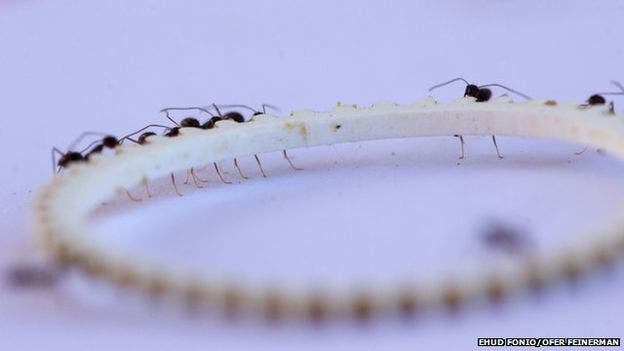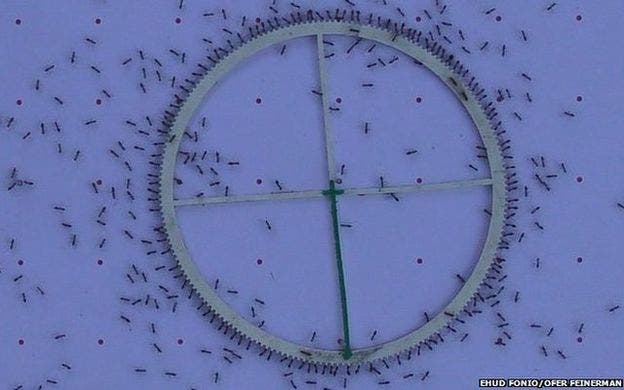Different ant species employ various tactics to forage food and keep the colony in tip top shape. Most often scouts will scour for food, and when a source is deemed fit a trail of pheromones guide worker ants to pick up the crumbs, leftover pizza or cheerios. Ants aren’t very picky, you know. What they are is very strong. It’s common knowledge that ants carry loads multiple times heavier than their own weight. Some species, like longhorn crazy ants are able to carry some of the biggest loads among ants by working together, joining in a band to perform the lifting. It’s a curios matter, one you might have often noticed in your very own backyard.

Simply by watching the longhorn ants, assisted of course by the latest motion tracking technology, a team of researchers at the Weizmann Institute of Science in Israel documented this collaborative effort, which is quite rare in the animal kingdom. The ants in question are labeled as crazy because of the erratic paths they make to and fro foraging sites, often moving in zig-zag. It didn’t register at the beginning, but soon enough Ofer Feinerman of Weizmann found the ant brigade’s chaotic behavior made sense and in doing so found that ants – individual ants – are a lot smarter and independent than we might think.
Imaging having to move a couch down stairs or past a block with your friends. If each would pull and tug in his own direction, then the couch won’t go anywhere and all of your collective efforts would have been spent for nothing. By carefully coordinating yourselves, you and your friends can move that couch. For this to happen, there needs to be a leader: “be careful, there’s a turn there”, “slug it this way” and so on. The leader of the couch-moving maneuver can, of course, be anyone in the group, taking turns. The crazy ants work in a similar way, the researchers found.

The researchers placed longhorn crazy ants in a dotted arena littered with obstacles, but also food. By carefully analyzing their movements, the team built a model that revealed the band of ants move food by keeping their brigade fluid. When the ant brigade teams up to carry a load, after a while they lose sense of the track they need to take. So a leader scouts a bit ahead, returns to the pack a pulls the weight towards the right direction. The ants take turns as a the leader, with each ant taking on the role for as little as 10 to 15 seconds. This explains the zig-zag.
“The individual ant has the idea of how to pass an obstacle but lacks the muscle power to move the load. The group is there to amplify the leader’s strength so that she can actually implement her idea”

When the load is too great or when there are too many obstacles, the ants can’t seem to carry the load. They have the muscle power to do it, though. Just bring in more ants. The larger the group, the harder it is to coordinate the whole movement, though. So, there’s a certain sweet spot, the researchers say. “Too many cooks spoil the broth,” says Vijay Kumar, a mechanical engineer at the University of Pennsylvania who studies collective animal behavior who wasn’t part of the study.
“Usually when people talk of ants they have this very romantic view that one ant is really stupid, but if you take many ants you get something very smart—an emergence of intelligence or something like that,” says Feinerman. “If you look at this system it looks like the intelligence of knowing where to go and how to pass obstacles does not come from the big group. The big group just gets stuck at the big obstacle and they never pass it. The problem-solving abilities come from the single ant who knows which way to go to pass the obstacle.”


